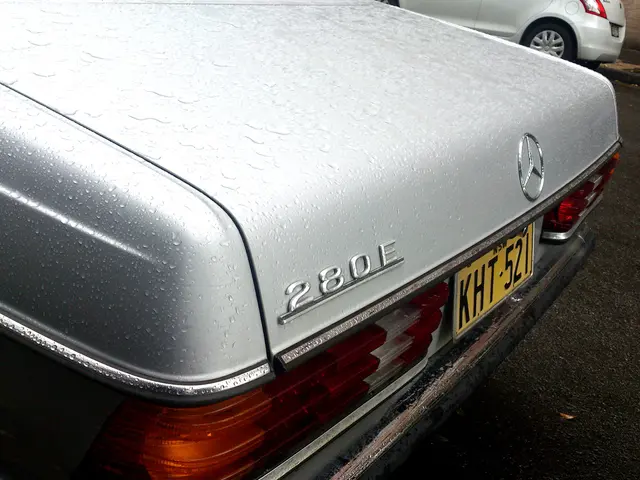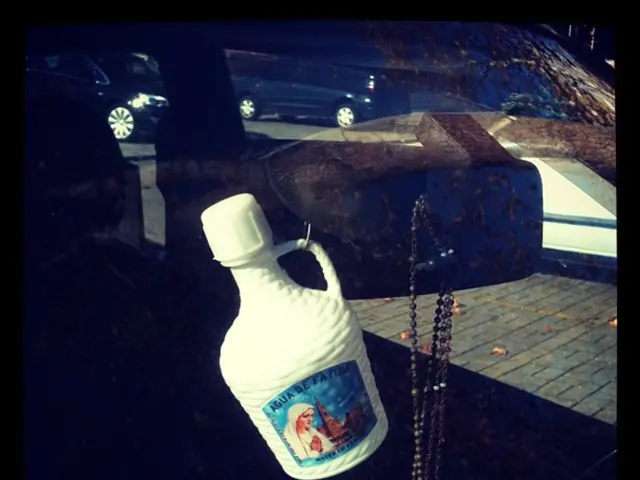Jaguar E-type S3 Purchasing Tips and Guidelines for Prospective Buyers
The Affordable Yet Exquisite Allure of the Jaguar E-type S3
While you can't exactly call a Jaguar E-type cheap, the Series 3 offers the most delectable value for money among them all. While an early flat-floor Series 1 could set you back up to a quarter-million pounds in pristine condition, the final V12-engined version from the early 70s is a relative bargain.
It might not be everyone's dream E-Type, given its evolution into a grand tourer as opposed to the raw and rowdy sportster it once was. But the Series 3 has plenty to offer, and may just be the smart investment today's discerning buyer is seeking.
The Series 3 made its debut in 1971, a decade after the E-type first captivated the automotive world at the Geneva Motor Show. It showcased a host of changes, including flared wheel arches, a wider track, and extra width across its bodywork. The E-type had grown up, and in more ways than one. The front suspension, for instance, featured anti-dive geometry for better control under aggressive braking. The brakes received a boost from a larger servo and an extended handbrake lever. Power steering also became standard equipment.
Under the hood, the Series 3's biggest difference boiled down to its engine. Say goodbye to the legendary six-cylinder XK engine, and hello to Jaguar's new 5.3-liter all-aluminum V12 – a unit destined for the XJ saloon line-up but just as suitable for the E-Type. With a compression ratio of 9:1, the V12 cranked out 272bhp – not a huge boost over the previous six-pot, but where it shone was its torque rating of 304lb.ft. at 3600rpm. This balance enabled the latest E-type to become a low-revving, high-performance, and effortless touring machine, capable of 0-60mph in under seven seconds and cruising comfortably above the UK motorway speed limit.
The Series 3 continued production until 1975, with a final 50 commemorative cars bringing the total number of V12 E-types sold worldwide to 15,287, of which 7,297 were 2+2 models. This meant the V12-engined model accounted for 21% of total E-Type sales – a testament to its lasting appeal.
Today, the Jaguar E-type Series 3 enjoys a decent survival rate while also offering good value by E-Type standards. As with any sporting Jaguar, the shrewd buyer should remain vigilant to avoid potential pitfalls.
Bodywork Inspections
The Series 3's bodywork consists of a steel tub with steel doors, bonnet, and either a boot lid for the roadster or a third door for the FHC. The tub is an early monocoque design, supported by a rear subframe for the differential, rear suspension, and inboard disc brakes. A sturdy all-steel square-tube frame bolstered under the front-hinging bonnet, supporting the engine and front suspension.
Corrosion is the enemy of any E-type, lurking in typical areas like wheel arches, sills, floors, door bottoms, and the engine framework. Imported examples from hot, dry climates are advisable to avoid corrosion issues and the potential repairs that could cost thousands of pounds. Some of the most expensive repair sections include the bulkhead top panel, or what many call the scuttle panel, below the base of the windscreen, available new for around £1,200.
When examining any E-type S3, be on the lookout for poor quality repairs and signs of filler, and be wary of any bubbling paintwork, indicative of rot working its way through the panel's other side.
Engine and Transmission Maintenance
Regular use and routine maintenance are essential to maintaining the Series 3's V12 engine in peak condition. The coolant should be replaced every two years, and it's wise to flush the engine and radiator to prevent a buildup of silt that could clog waterways and cause overheating issues leading to head gasket and engine failure.
The V12 for the E-type remained at 5343cc throughout the Series 3's lifespan, consisting of aluminum 12-valve cylinder heads and an aluminum engine block with a forged steel crankshaft. The timing gear uses a single duplex chain connected between the crankshaft and the overhead camshaft sprockets. The chain's tensioner works well but should be replaced once it starts to slip, which necessitates an extensive engine strip-down. Four Zenith-Stromberg 175CD carburetors provide fueling, although they are often difficult to set up and balance, leading many Series IIIs to undergo conversion to SUs.
The V12 is known for being a smooth-running engine, so take note of any knocks or rattles as well as checking underneath for oil leaks. Ensure there is around 60psi of oil pressure at speed, as low-mileage cars may suffer from piston rings seizing into the cylinder bores, although lubricating the bores can sometimes resolve this. The oil seal at the rear end of the crankshaft is known for drying out, leading to rubbing after starting and causing an oil leak. If you're buying a car in need of work and with known engine issues, budget accordingly, as a marque specialist will generally charge upwards of £12,000 to fully rebuild Jaguar's V12.
Four-speed manuals and three-speed automatics were offered in the Series 3 E-type. In manual cars, it's important to check the operation of the clutch, as a short pedal travel suggests the clutch needs either adjusting or replacing. You can buy a new clutch kit for less than £300, but a Jaguar specialist is likely to charge in excess of £1,000 for the work. If the car you're buying is an automatic, make sure the gear changes are smooth and that there's no sign of slipping under load.
Steering, Suspension, and Brakes
There are servo-assisted disc brakes all-round (three-piston calipers at the front and two pistons for the rear), with the front end being easiest to inspect. Lack of use may result in a seized caliper and a heavily corroded brake disc, so check that the brakes aren't showing signs of overheating after your test drive. Discs and pads generally cost £75-100 depending on whether you go for 'budget' or 'branded', while a single front caliper will set you back around £150.
Inboard rear brakes are not so easy to inspect, although there may be an access hole inside the boot – without which it's a case of crawling underneath or having access to an inspection pit or ramp. Check the condition of the discs and the thickness of the brake pads and separate handbrake pads, as well as the mechanical brake caliper. Exchange calipers, new discs, and pads are all competitively priced via independent Jaguar parts specialists, but the work involved in fitting them is extremely labor-intensive and requires removal of the rear subframe and diff assembly.
A power-assisted rack-and-pinion steering system is employed, which consists of a belt-driven power steering pump. Look for fluid leaks from the pipework's connections, although new pipes are available. If there's a lot of play in the rack or the pump is noisy, new components are available – but you should budget accordingly (up to £350 for a new rack) when buying the car.
The front suspension consists of double upper and lower wishbones with a separate telescopic damper and torsion bar, plus an anti-roll bar. At the rear, there's a wishbone with the driveshaft being used as the other wishbone, along with a radius arm, coil spring, and telescopic damper. Look for uneven tyre wear, which could suggest incorrect wheel alignment at the front, but also worn suspension components all-round. Many S3s have been fitted with polyurethane bushes in recent years, though this can negatively impact ride quality.
Interior and Electrics
Check for water leaks inside the cabin, especially on the roadster, often caused by worn seals around the underside of the hood or gaps between the tops of the door glass and the seals. You obviously need to check the condition of the hood itself, looking for tears in the material and other signs of damage. Available hoods from Aldridge Trimming range from around £300 for PVC to over £450 for mohair. If you don't plan on replacing the hood yourself, you also need to factor in labor charges.
The S3 E-type interior is trimmed in several separate sections of carpet with leather or vinyl upholstery. If the car has had previous problems with leaks, you may find it feels and smells damp. Full carpet sets are available (Aldridge Trimming can help here), though they can cost well over £500 for original spec, although cheaper options are available. If the seats are damaged or worn (with the outer bolsters on the side of each front seat being particularly vulnerable), you can buy a pair of original-looking perforated seat covers from around the £800 mark.
Finally, check that all the instruments and switches work as they should, and that the instruments are illuminated when the sidelights and headlights are switched on. Waggle the steering wheel up and down and from side to side to check the bushes inside the column.
Jaguar E-type S3: Our Verdict
If an E-type has long been on your classic car wish list and you're finally ready to dive in, it's hard not to be drawn towards the Series III's additional value for money.
There is, however, much more to this final-generation E-type than its relative affordability, as this is the model with the highest levels of equipment (including power steering and servo-assisted brakes), making it arguably the easiest version to live with.
And of course, the Series III is also the only E-type to benefit from Jaguar's legendary V12, an engine that's an absolute pleasure when meticulously maintained and running right.
Jaguar E-type Series 3 Timeline
1971
Series 3 E-type launched (March) in roadster and 2+2 FHC guises
1972
Interior and exterior color options changed
1973
February sees the Borg-Warner Model 12 replace Model 8 on automatic cars
1973
Quad-pipe exhaust replaced by twin setup in March. 2+2 production ends in October
1974
The final 50 Commemorative cars produced. All but one are black
1975
The final new E-types are delivered
The Series 3's allure can extend beyond its exquisite design and grand touring capabilities, as it offers a taste of luxury technology with its vintage gadgets such as power steering and servo-assisted brakes. This affinity for modern amenities seamlessly blends with the timeless appeal of owning a classic car like the Jaguar E-type S3.
For the discerning buyer seeking investment potential, the Series 3's value is further enhanced by its incorporation of a powerful V12 engine, marking a significant departure from the iconic six-cylinder XK engine, and providing an ideal balance between low-revving torque and high performance.








